“Armchair Imagineering.” For Disney Parks fans, it’s a skill that’s learned early, and practiced often. Almost inescapably, theme park aficianados can’t help but to imagine what could be; what should be; what we would do if we were given creative control of a theme park we love and an unlimited budget to make it happen.
And once in a while, we finally decide to put our ideas down and make them real. That’s exactly what lead to this project: my armchair-Imagineered, fully-matured, Blue Sky version of California Adventure. (It’s not the only “Blue Sky Build-Out” I’ve created! You can check out my reimagined version of Disney’s Hollywood Studios on Twitter, and my from-scratch plans for a whole new Disney Park – Fantastic Worlds – here on Park Lore.)
I should say before I even begin that no one “armchair Imagineers” better than S.W. Wilson, whose blog – Ideal Build-Out – contains work that is not only jaw-droppingly, stomach-churningly enviable, but almost inconcievably professional. Be sure to bookmark that blog, and follow @buildoutideal on Twitter for incredible park concepts.
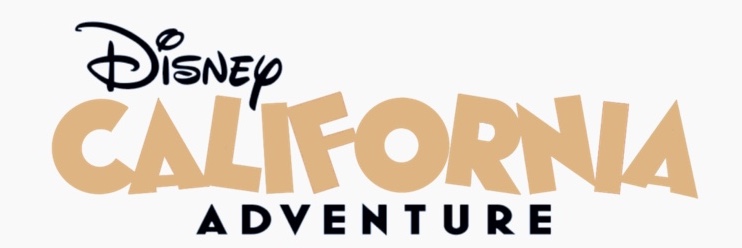
But today, we’ll step land-by-land through my own, hand-drawn, “built-out” version of DISNEY CALIFORNIA ADVENTURE. Though it may be a “Blue Sky” reimagining of what Disneyland’s second gate could be, it’s far from a complete fantasy. Actually, the park you’re about to see would’ve been at least conceptually possible until about 2017, when the park’s expansion pads started filling up and “DCA 2.0” gave way for “DCA 3.0,” injecting outright contradiction into the idealized, historic, and distinctly Californian park Imagineers had unveiled just five years earlier…
So as far-fetched as its contents may be, know that “my” California Adventure pretty realistically adheres to the real limitations Disney has in this park – mostly related to acreage, access roads, infrastructure, and neighbors. That’s why – along the way – we’ll look at each land’s Background before we get to the Build-Out, with necessary Diversions here and there. Would this “idealized” build-out of California Adventure make it a top tier Disney Park at last? Or is Disneyland’s second gate just doomed to be a cartoon catch-all? Let’s start at the beginning…
And before we head off, remember that you can unlock rare concept art and audio streams in this story, access over 100 Extra Features, and recieve an annual Membership card and postcard art set in the mail by supporting this clickbait-free, in-depth, ad-free theme park storytelling site for as little as $2 / month! Become a Park Lore Member to join the story! Until then, let’s start at the beginning…
The Real California Adventure Story
If you don’t know much about Disney California Adventure, let’s take a second to catch you up…
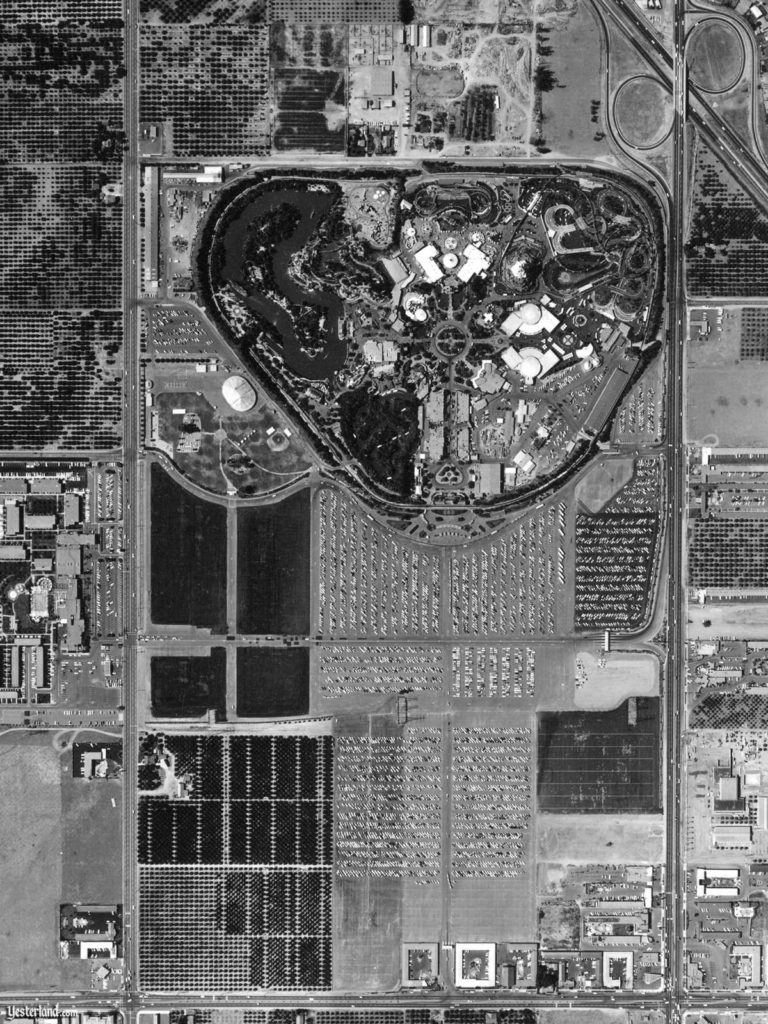
For most of its life, little ole’ Disneyland was all alone. Walt’s “original magic kingdom” was a storybook oasis surrounded in the urban sprawl of Southern California. Disneyland and its equally-sized blacktop parking lot were stalwart companions, even as dozens and dozens of hotels, motels, convenience stores, and neighborhoods surrounded them on all sides. So even as Walt Disney World grew, by the late ’80s Disneyland was still just a single theme park mostly drawing intergenerational, loyal locals, road-tripping regional visitors, and the odd Disney historian from afar, and only for a day or two at a time.
Michael Eisner’s plan was to change that. In the early ’90s, Disney announced that a second theme park – the Possibilityland: Westcot – would soon rise on Disneyland’s only expansion pad: its own parking lot. As part of a wide-reaching reinvention, Disneyland would become a multi-park resort, gobbling up available land to add parking structures, hotels, and shopping and entertainment venues around the new Disneyland and Westcot combo.
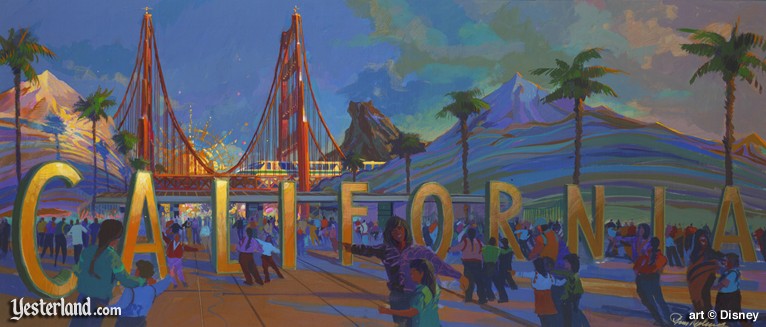
But after the disastrous opening of Disneyland Paris, nearly everything in the pipeline at Disney was scaled back, including plans for a second gate in Anaheim. In our Disney’s California Adventure: Part I feature, we walked through the value-engineered park that finally opened in 2001. Suffice it to say, the park meant to catapult Disneyland into international, multi-day resort status instead crashed and burned.
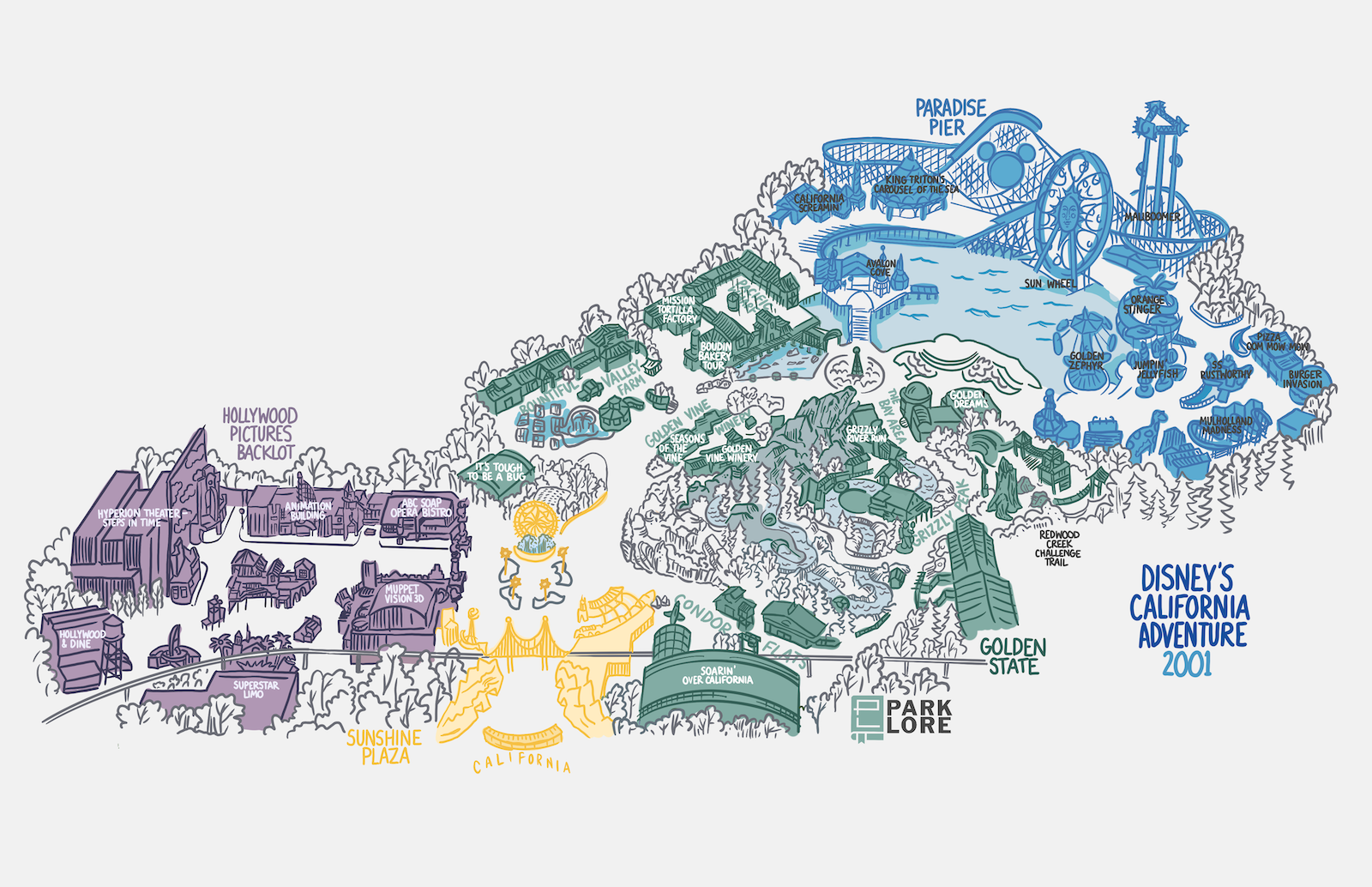
Disney’s California Adventure had less than a dozen rides – most off-the-shelf carnival rides you could find at your local Six Flags. It had practically nothing for families, and no Disney characters. The park was vastly underbuilt, with more restaurants than rides, and (so it seemed on most days) more rides than guests.
But it wasn’t just that California Adventure didn’t have enough to do. Worse still, Disneyland’s second gate broke all the rules of Imagineering. Rather than carrying guests away to historic, idealized places and times in Californian history, it was set here and now – a pastiche of ’90s Californian pop culture, proudly packed with “MTV attitude,” modern music, celebrity guest stars, and charicatured settings.
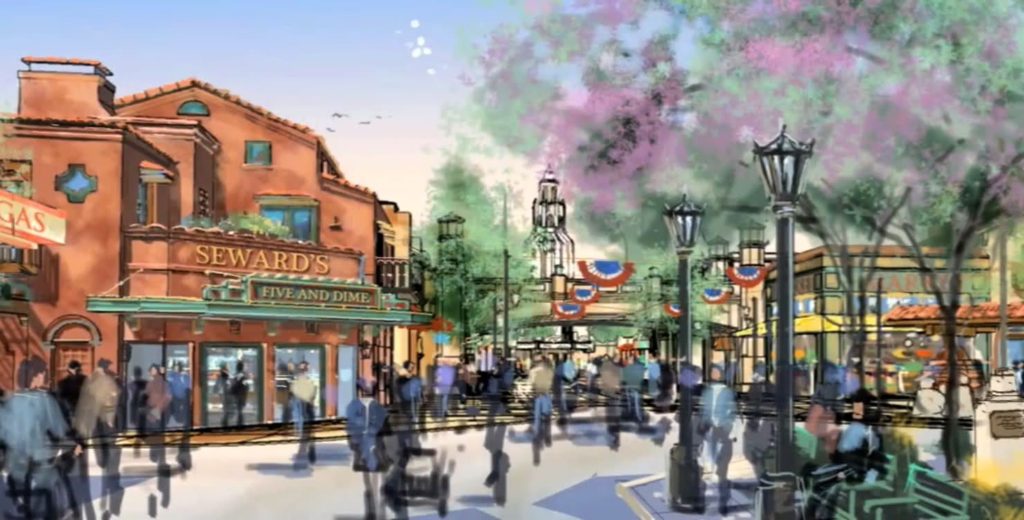
It’s not often that Disney admits they were wrong, but in 2007, then-new CEO Bob Iger announced an unthinkable effort: a five year, $1.2 billion reimagining that would not just add news rides and attractions to the park, but that would dismantle California Adventure’s lands and rebuild them in the style of Disneyland: as idealized, immersive places and times plucked from California’s real history passed through a lens of fantasy.
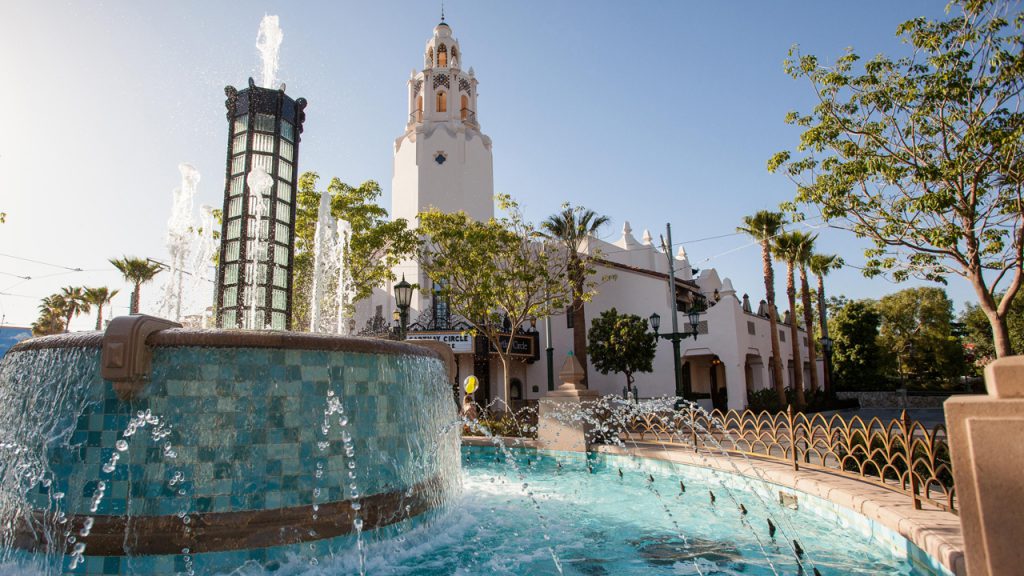
And as we saw in Disney’s California Adventure: Part II, the transformation was completed on June 15, 2012, when Disney California Adventure was re-dedicated as a park packed with new rides, plenty of Disney & Pixar characters, eight beautiful new lands and – most importantly – a new spirit. In that moment, anything seemed possible for the park and even its harshest critics largely had to admit that the unprecedented investment had laid the groundwork for something more worthy of being a counterpart to Disneyland.
Alright, alright, the story of Disneyland’s beleaguered second gate also includes a less-triumphant “DCA 3.0” era post-2012 (see Disney’s California Adventure: Part III) which has seen Disney overcorrect. The park that was once “too much California, not enough Disney” has inarguably tipped in the other direction, veering into “studio park” territory as it’s senselessly packed with IP and hampered by decisions that weirdly undo the work Disney spent a billion dollars on just a decade ago…
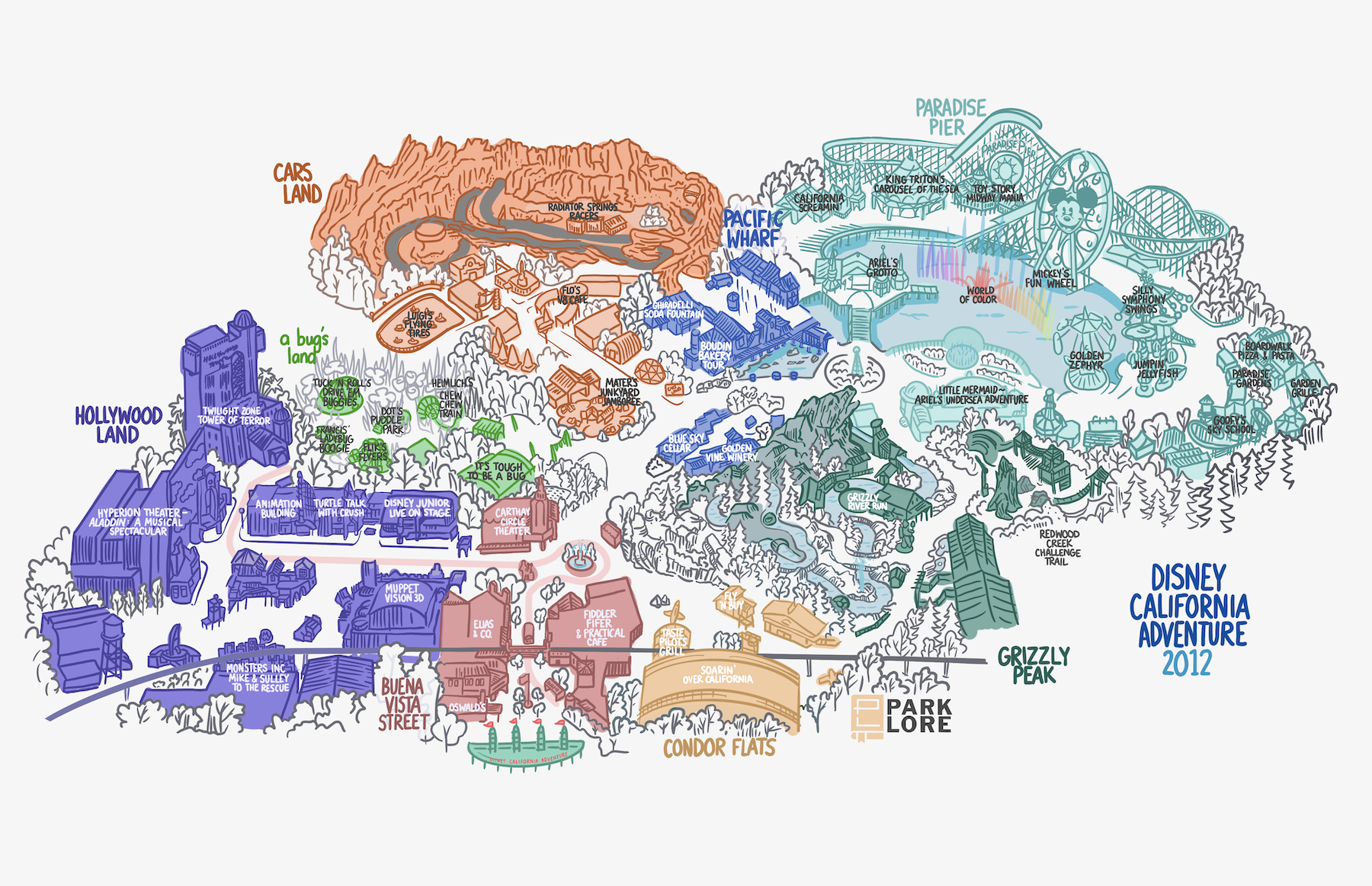
So surely you can understand that my “build-out” uses “DCA 2.0” (above) as the starting point. In other words, the park we’re touring is largely the answer to the question, “What might California Adventure’s final form look like if it had stuck to that 2012 ethos? What would it contain if it had found the balance of Disney and California and stuck to it? What could this park look like fully matured, but still ‘on track’?” Here’s what I decided…
Buena Vista Street
Background

Buena Vista Street is practically perfect. Combining the best of Main Street and the best of Hollywood Studios’ Hollywood Blvd., this buzzing, 1920s streetscape is a newsboy’s dream. It’s an electric, red-brick, idealized Los Angeles at the height of its Golden Age… and in fact, a romanticized snapshot of the Los Angeles that Walt himself would’ve found when he arrived by train in 1923.
To that end, there’s also an awesome narrative aspect of the land, in that guests who begin at Disneyland’s Hub actually walk through Walt’s memories of a quiet, charming, turn-of-the-century, Midwestern town during his childhood, pass under the Main Street Train Station, then find themselves at the gates of the Pan-Pacific in a bustling, buzzing young city twenty years later – literally following Walt‘s California Adventure.
Build-Out
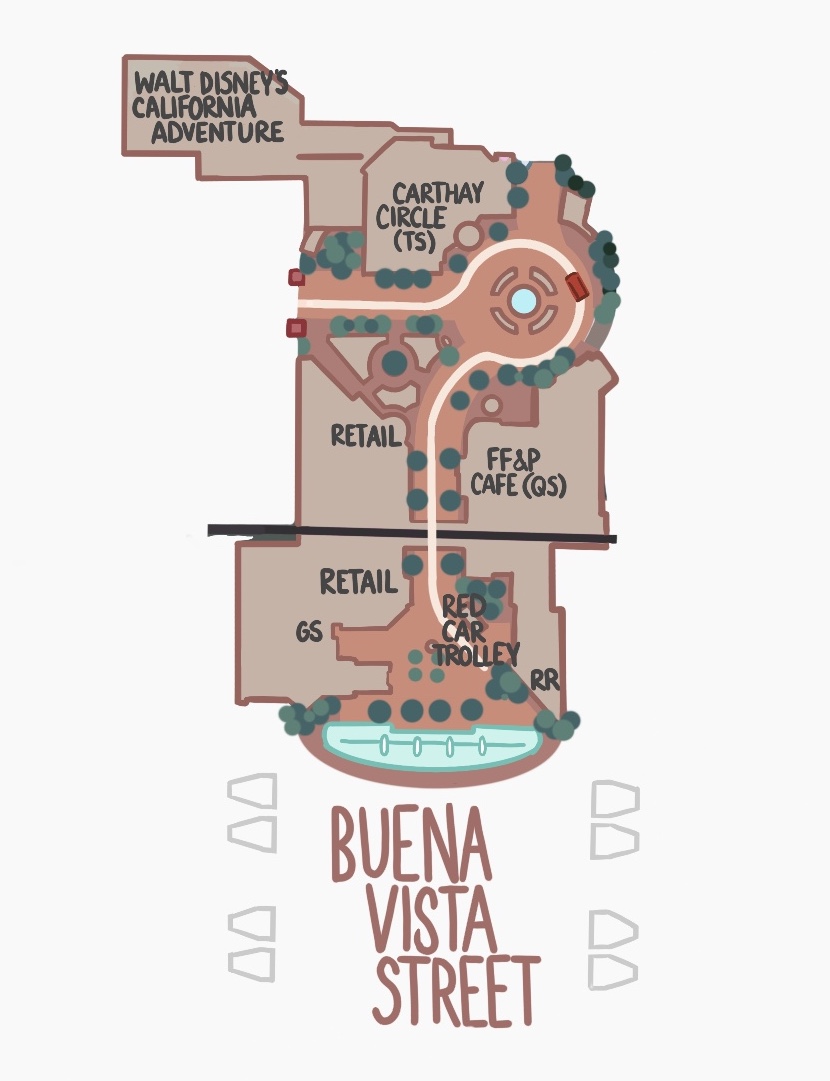
Buena Vista Street is one of the strongest opening acts of any Disney Park, a fitting counterpart to Main Street, an ode to Walt’s story, and a perfect prologue to what “DCA 2.0” was about. So naturally, my “built-out” version really doesn’t change much.
Since it’s one of the sweetest little ‘world-building’ rides in the Disney Parks portfolio, the RED CAR TROLLEY stays (and has a more logical route, which you’ll see unfold as we go). But in my version of the park, it’s not the only ride in the land.
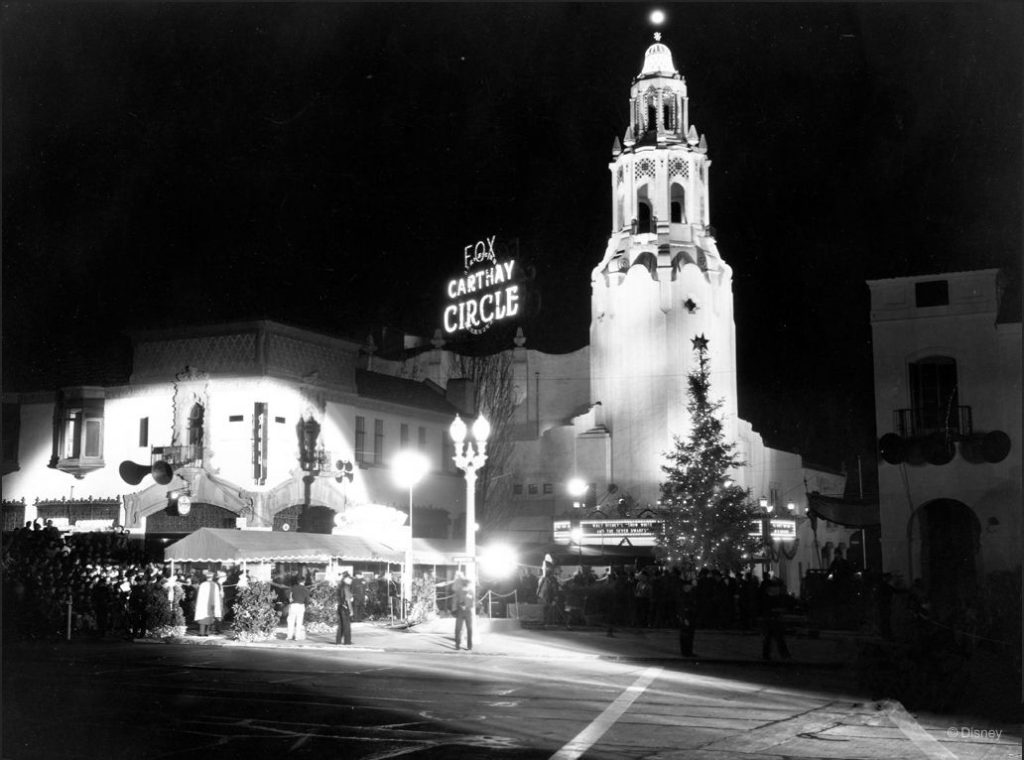
Even though Pixar Pier’s Ferris wheel is often used as California Adventure’s park icon, it’s clearly meant to be the Carthay – the palatial 1920s movie palace that resides at the end of Buena Vista Street. As you probably know, the real Carthay Circle (demolished in 1969 for low rise office buildings) wasn’t just an icon of Los Angeles and the filmmaking business; it was the place where Walt risked it all to premiere Snow White and the Seven Dwarfs – the world’s first full-length animated feature film.
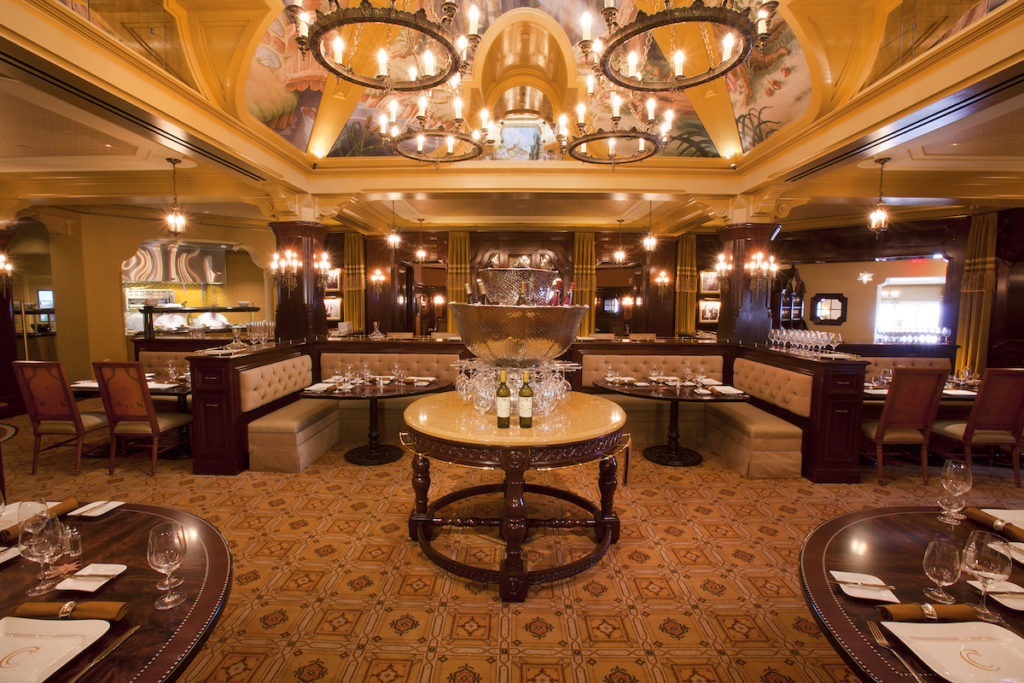
Though early rumors had suggested that Disney’s scaled recreation of the Carthay would contain an exhibit on Walt’s life, it ultimately ended up housing a lounge and private club on the ground floor, and a full service CARTHAY CIRCLE RESTAURANT on the second (above), all of which are chock full of odes to the historical place and to Snow White. It works, and I actually wanted to keep as much of that as possible! But as the park’s clear icon, I also wanted the Carthay to contain something all guests could enjoy.
Absorbing the adjacent “Disney Theater” (home to a Disney Junior Dance Party show) and building out additional space, the Carthay’s lobby could easily serve as the entrance to a small, Fantasyland-style dark ride (even keeping the restaurant in operation on level two and the bar on level one.) I considered putting a version of Snow White’s Enchanted Wish into the Carthay (there’s really no better a spot) but ultimately decided on a different route…



Upsizing the idea of an exhibit on Walt’s life, I decided to wedge in a small biopic dark ride I called WALT DISNEY’S CALIFORNIA ADVENTURE, in which guests hop aboard miniature train engines and proceed through Walt’s story.
I like the idea of this ride being really simple; maybe using newspaper-type visuals throughout, layering flats with black-and-white images, film reels, headlines, and perhaps the narration of someone like Julie Andrews to tell the story of Walt’s boyhood, to Kansas City, Ub Iwerks, and onward to California, Oswald & Mickey, ending at the Snow White premiere. A short, sweet, personally-scaled, impressionistic biopic ride. Guests would then exit into a small exhibit space, which (appropriately) brings us to the next land, which merges beautifully with Buena Vista Street…
So let’s hop aboard the Red Car and glide down the streets of Los Angeles to another land you’ll recognize, but with a nice, built-out twist…



Is Nemo’s Seaskimmers another Aquatopia-styled ride?
Do you ever like to think (in a purely fictional and prideful world) that Disney potentially has some similar ideas to you and then says “oh darn, he used them in his rebuild” so they can’t use them?
For better or worse I don’t think I have a large enough following that anyone from WDI would ever even stumble across my stuff! Hahahah. But that isn’t to say it’s not a cool daydream that someone would say to themselves or to me, “This is great stuff stuff and I would love if we could make it real in the parks just as you’ve drawn it.” But again, I know I’m not actually a professional and that countless real world limitations would stop that from happening every single time! Haha
This is probably my favorite build out as a Disneyland regular. I love the call backs to unused lands like Discovery Bay and the addition of Mystic Manor. Pacific Point gives me a Northern California vibe like close to Oregon area. Can’t wait for your next build out!!
The thing about the 2012 redesign is that, while an idealized California appeals to out-of-towners, it also leans into DL’s identity as a local’s park by giving us places that we cannot visit in real life. I especially love the Carthay Circle restaurant and the Pan Pacific Auditorium gates, because they were torn down before I could ever see them.
Which is a long winded way of saying that the Figueroa tunnel does not belong in California Adventure, because I’ve driven there a hundred times. (To a lesser extent I’m not interested in putting the Chinese Theater in the park, because it’s still there, but I have to admit every time I’ve gone to the Chinese Theater I’ve had fun. Pasadena, however…)